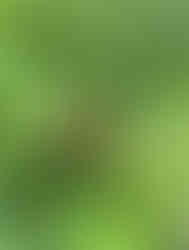As a brassica plant grower, you probably already know well the small white (Pieris rapae) and large white (Pieris brassicae) butterfly species that will happily feed on your plants and at Cornish Cabbage Plants we tend to see many across our brassica field too. However, this year, there has been a lot less present than in normal years. We don’t use sprays to control these populations and so our brassica field is a biodiversity hotspot compared to our grass fields. A small percentage of our plants are eaten by the caterpillars and other insects, as well as birds, rabbits and deer, but it is not detrimental to our production overall.
Spraying is very damaging for a wide range of organisms, not just the particular species causing you problems, therefore it is advisable to try alternative methods to protect your brassicas that don’t kill off everything, as even birds and mammals can be affected through eating contaminated prey. At the end of the day, a few damaged leaves are not so bad if it means there is biodiversity in your garden that is able to flourish as they provide an essential service to us through pollination and other ecosystem services.
Despite the problems they can pose for your brassicas, insects are incredibly important to all ecosystems as an essential food source for many other species and play a major role in pollinating crops, with natural pollinators responsible for at least a third of human food production. Despite their crucial role, most insects have been declining for many years, with a 70% decline in butterfly occurrence alone since 1976. They are indicator species that can be used to give greater insight into wider ecosystem health. Due to this, it’s a great idea to plant in other areas of your garden with them in mind, as gardens make up a massive proportion of British land and this can really make a difference to their continued survival.
There are several options open to you to protect your plants and minimise damage while also not directly killing all wildlife in your garden. An effective way is using butterfly netting that will make sure they cannot access the plants to lay their eggs throughout spring until autumn. We have netting available in a variety of sizes on our website. It is also an option to attract their natural predators to your garden, such as insectivorous birds by having a nearby bird table or seed balls. Planting nasturtiums near your brassicas can lure the caterpillars away from your plants and still allow them to live. Other plants that can attract caterpillars and provide a safe place for them to grow are honeysuckle, jasmine, clematis.
By planting native plants in your garden, you can be directly helping species that may only feed on one or two host plants. For example, planting flowers that provide nectar and pollen for as long as possible throughout the year such as Crocus, Michaelmas daisy and ivy is very effective. Also, catmint, French marigold, Balkan clary and wild marjoram are great choices that will attract more species to your garden. The RHS plants for pollinators guide very thoroughly lists all the plants that are beneficial to insects and at what time of year they flower. Creating a variety of different habitats within your garden will mean more species can utilise the area such as a pond habitat, wildflowers, bare ground, long grass and log piles.
This summer I have been collecting my dissertation data on the silver studded blue butterflies by recording their thorax temperatures using a thermocouple. This will then give me some insight into how they thermoregulate their body temperature depending on what they are doing, the ambient temperature and localised shelter in relation to the changing climate. I have loved getting to know some of our butterfly species and being able to identify them is great fun! Other species I regularly came across were meadow brown, ringlet, small skipper, gatekeeper and small heath. The species present varies depending on the habitat and area you are looking in, so you may find many different species visit your own garden!
Above photo: Silver studded blue butterfly (Plebejus argus)
Above photo: Dark green fritillary (Speyeria aglaja)
Above photo: Small skipper (Thymelicus sylvestris)
Useful sources:
References:






Comments